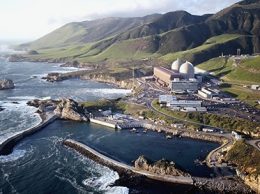Editorial: Diablo Canyon study sets stage for debate
In a seismic study submitted to the Nuclear Regulatory Commission in recent days, PG&E has made the claim that its Diablo Canyon nuclear plant near San Luis Obispo could successfully withstand a major earthquake.
The study was mandated by the Nuclear Regulatory Commission four years ago in the wake of the 2011 earthquake and tsunami event that destroyed much of the Fukushima Daiichi power plant in Japan. According to an executive summary released by PG&E, the plant and key equipment could withstand an event that involved multiple earthquake faults rupturing at the same time.
The study results are rolling in amid reports that equipment upgrades during the past few years were installed without regard to seismic standard. And there are ongoing questions about whether PG&E has fully kept local and state officials in the loop as it proceeded with its NRC-mandated seismic study.
The bottom line on PG&E and Diablo Canyon is that by completing the study, it has passed the first threshold toward meeting the NRC-mandated “stress test” for post-Fukushima earthquake safety. Despite claims that its upgrades did not meet seismic standards, there is little evidence of the shoddy work and ineffective upgrades that led to the closure of Edison’s San Onofre plant.
The conventional wisdom on Diablo Canyon is that the plant’s design and operating record, and its importance to balancing the electric load between northern and southern California, mean that it likely will get the green light from the NRC to operate through the end of its current license a decade from now.
But whether the NRC, state regulators and other stakeholders will allow the utility to extend that license is another question. In the pre-Fukushima world, PG&E was trying to fast-track a license extension for an additional 25 years — that effort has been withdrawn.
In the post-Fukushima world, regulators will be extremely cautious in their assessment of earthquake-tsunami risk and may even condition continued operation on more safety improvements. And the region would be wise to think about how it would replace jobs, the tax base and energy supplies in the event the plant is shut down when its current operating authority runs out.










